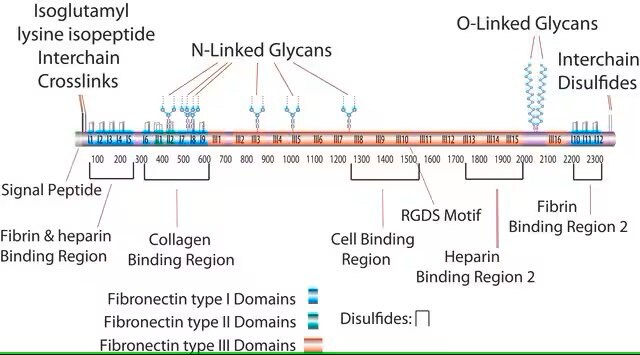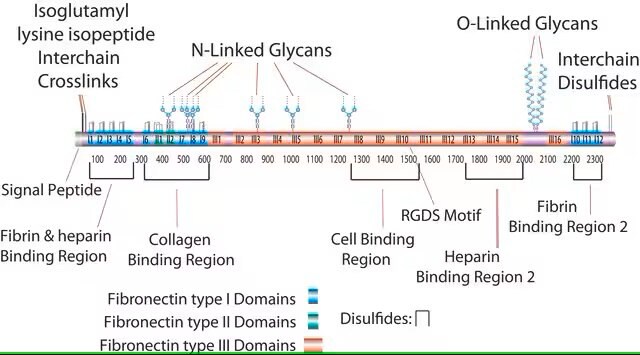Kluczowe dokumenty
10838039001
Roche
Fibronektyna
from human plasma
Synonim(y):
Fibronectin
About This Item
Polecane produkty
pochodzenie biologiczne
human plasma
Poziom jakości
sterylność
non-sterile; 0.2 μm filtered
Próba
95% (SDS-PAGE)
Formularz
lyophilized (clear, colorless solution after reconstitution)
masa cząsteczkowa
440 kDa
opakowanie
pkg of 5 mg
producent / nazwa handlowa
Roche
warunki przechowywania
avoid repeated freeze/thaw cycles
metody
cell culture | mammalian: suitable
numer dostępu UniProt
temp. przechowywania
2-8°C
informacje o genach
human ... FN1(2335)
Szukasz podobnych produktów? Odwiedź Przewodnik dotyczący porównywania produktów
Opis ogólny
Specyficzność
Zastosowanie
Metoda testowania
Postać fizyczna
Uwaga dotycząca przygotowania
5 μg/cm2 for the coating of cell culture vessels
Storage conditions (working solution): -15 to -25 °C
The reconstituted solution is stable at -15 to -25 °C.
Note: Store the reconstituted solution in aliquots at -15 to -25 °C.
Avoid repeated freezing and thawing.
Rekonstytucja
Upon reconstitution, the solution may contain a small amount of insoluble aggregated material. These aggregates are a phenomenon inherent to fibronectin and do not influence product performance.
Inne uwagi
Oświadczenie o zrzeczeniu się odpowiedzialności
Kod klasy składowania
11 - Combustible Solids
Klasa zagrożenia wodnego (WGK)
WGK 1
Temperatura zapłonu (°F)
does not flash
Temperatura zapłonu (°C)
does not flash
Wybierz jedną z najnowszych wersji:
Masz już ten produkt?
Dokumenty związane z niedawno zakupionymi produktami zostały zamieszczone w Bibliotece dokumentów.
Klienci oglądali również te produkty
Produkty
The extracellular matrix (ECM) is secreted by cells and surrounds them in tissues.
3D cell culture overview. Learn about 2D vs 3D cell culture, advantages of 3D cell culture, and techniques available to develop 3D cell models
Przegląd hodowli komórek 3D. Dowiedz się więcej o hodowli komórek 2D i 3D, zaletach hodowli komórek 3D i technikach dostępnych do tworzenia modeli komórek 3D
Extracellular matrix proteins such as laminin, collagen, and fibronectin can be used as cell attachment substrates in cell culture.
Protokoły
Rozcieńczona fibronektyna do mocowania komórek, w zależności od typu komórek. Protokół powlekania, produkty i często zadawane pytania.
Dilute fibronectin to the desired concentration. Optimum conditions for attachment are dependent on cell type and application. The typical coating concentration is 1 – 5 ug/cm2.Fibronectin coating protocol, products, and FAQs.
Nasz zespół naukowców ma doświadczenie we wszystkich obszarach badań, w tym w naukach przyrodniczych, materiałoznawstwie, syntezie chemicznej, chromatografii, analityce i wielu innych dziedzinach.
Skontaktuj się z zespołem ds. pomocy technicznej







